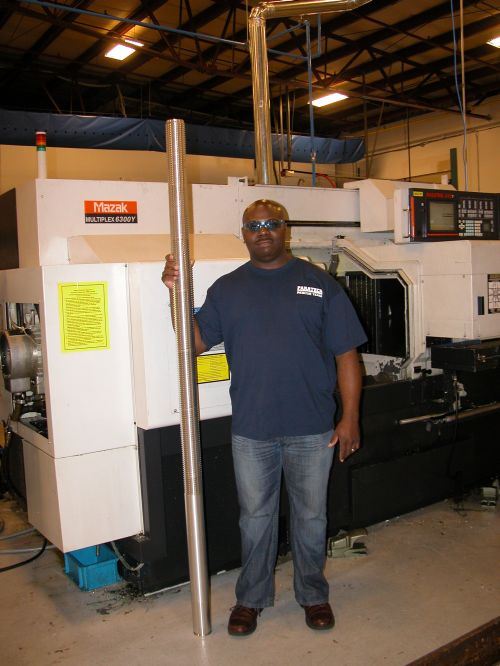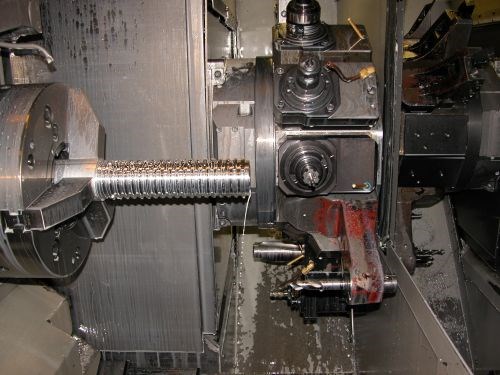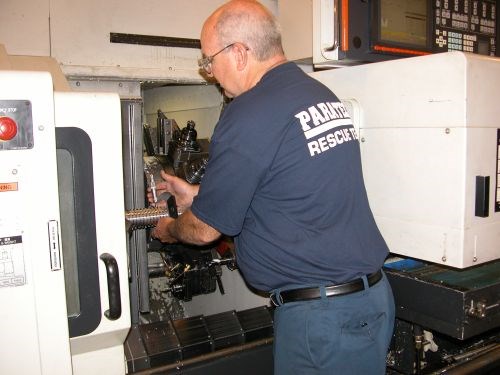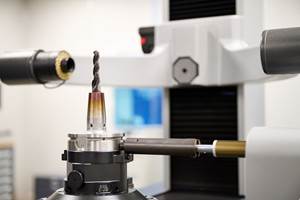Although manufacturers often cite accuracy as a critical concern, producing products to specification takes on a new importance when human lives are at stake. Such is the case at Paratech, Inc., a manufacturer that specializes in tools for emergency rescue situations. “Our equipment can’t fail,” says Brian Miller, manufacturing engineer.
Recently, the difference between success and failure in the manufacturing of a rescue tool used in structural-collapse scenarios hinged on a single aspect of the production process. Swapping the live toolholder on a CNC lathe for a new model, a Mimatic S/N 0901/16 from Lyndex-Nikken (Mundelein, Illinois), enabled the company to meet both accuracy and concentricity goals for a critical hole-drilling operation.
The component in question is a long-shore strut tube for the company’s US&R Rescue system. That’s just one of the many mechanical and pneumatic rescue and forceful entry tools produced at Paratech’s Frankfort, Illinois location, where 70 employees manufacture, assemble and test all products in-house to ensure quality. This equipment is designed to be durable and rigid, yet light enough to be easily managed by rescue personnel, the company says. Customers include global government agencies as well as local fire departments. Paratech also maintains an office in Denmark.
Constructed of 6061 aluminum, the long-shore strut tube requires drilled holes for ventilation and structural line-up. Accurate drilling is imperative for the product to operate successfully, but the tooling the shop used initially on its Mazak Multiplex 6300 CNC turning center could not meet required tolerances. Runout was 0.003-inch, and the company needed to improve concentricity to bring the holes to specification. “A hole we were drilling was coming out egg-shaped,” Mr. Miller recalls.
Replacing the previous holder with the Mimatic model improved runout to 0.0004 inch. Additionally, the new holder can achieve accuracies ranging to 0.0002 inch, the company says.
According to supplier Lyndex-Nikken, the new holder’s ability to outperform Paratech’s previous model is due to a range of design advantages. One of these is the construction of Mimatic toolholder housings. To improve accuracy and rigidity, these housings are machined from solid blocks of special steel rather than a casting. Mr. Miller likens this strategy to Paratech’s approach to manufacturing. To improve the durability of its products, the company never welds parts. “Like us, Mimatic has made an effort to eliminate weak spots,” he explains. “A single, solid block of steel is stronger and won’t break or wear out.”
Lyndex-Nikken also cites the use of Teflon seals for Mimatic’s improved performance. These seals enable the live toolholders to run at faster speeds, absorb higher temperatures and last longer in extreme conditions. In addition, the line’s hardened and ground gears are machined in unison. This is said to enable the gear teeth to mesh better and run more smoothly with less noise and higher torque transmission. Combined with precision-ground spindle bearings, these features work together to improve toolholding accuracy, rigidity and durability during turning operations, the supplier says.
Paratech went on to use Mimatic live tools on other jobs after realizing success with the long-shore strut tubes. Perhaps the most notable of these jobs are its Vehicle Stabilization systems. These products typically include approximately 30 different inner and outer working parts, including Acme collars, tube ends, ratchet belts and strut extensions.“We run production on a tight schedule,” Mr. Miller concludes. “If we’re down because of toolholders, we lose money. We buy what we know will hold up.”




























.png;maxWidth=300;quality=90)










